- Home
- P. D. James
Shroud for a Nightingale Page 2
Shroud for a Nightingale Read online
Page 2
Suddenly she found she had turned the last corner and Nightingale House was before her. She nearly stood on the brakes in surprise. It was an extraordinary house, an immense Victorian edifice of red brick, castellated and ornate to the point of fancy, and crowned with four immense turrets. It was brightly lit in the dark January morning and after the gloom of the road it blazed at her like a castle from some childhood mythology. An immense conservatory was grafted on to the right side of the house, looking, thought Miss Beale, more appropriate to Kew Gardens than to what had obviously once been a private residence. It was less brightly lit than the house but through the faintly luminous glass she could discern the sleek green leaves of aspidistras, the harsh red of poinsettias and the yellow and bronze blob of chrysanthemums.
Miss Beale’s recent moment of panic under the trees was completely forgotten in her amazement at Nightingale House. Despite her normal confidence in her own taste, she was not entirely immune to the vagaries of fashion and she wondered uneasily whether in certain company it might not be proper to admire it. But it had become a habit with her to look at every building with an eye to its suitability as a nurse training school—she had once, on a Paris holiday, found herself to her horror rejecting the Elysée Palace as unworthy of further notice—and as a nurse training school Nightingale House was obviously quite impossible. She had only to look at it for the objections to spring to mind. Most of the rooms would be far too large. Where, for instance, would one find cosy offices for the principal tutor, clinical instructor or school secretary? Then the building would be extremely difficult to heat adequately and those oriel windows, picturesque no doubt if one liked that sort of thing, would keep out a great deal of light. Worse still, there was something forbidding, even frightening, about the house. When the Professional (Miss Beale, in defiance of an unfortunate comparison, always thought of it with a capital P) was climbing so painfully into the twentieth century, kicking away the stones of outworn attitudes and methods—Miss Beale was frequently required to make speeches and certain pet phrases tended to stick in her mind—it really was a pity to house young students in this Victorian pile. It would do no harm to incorporate a strong comment about the need for a new school in her report. Nightingale House was rejected even before she set foot in it.
But there was nothing to criticize in her welcome. As she reached the top step, the heavy door swung open letting out a gust of warm air and a smell of fresh coffee. A uniformed maid stood deferentially aside and behind her down the wide oak staircase, gleaming against the dark panelling like a Renaissance portrait in grey and gold, came the figure of Matron Mary Taylor, hand outstretched. Miss Beale assumed her bright professional smile, compounded of happy expectation and general reassurance, and stepped forward to meet her. The ill-fated inspection of the John Carpendar Training School had begun.
3
Fifteen minutes later, four people made their way down the main staircase to the demonstration room on the ground floor where they were to watch the first teaching session of the day. Coffee had been served in the Matron’s sitting-room in one of the turret blocks where Miss Beale had been introduced to the Principal Tutor, Miss Hilda Rolfe, and to a senior consultant surgeon, Mr. Stephen Courtney-Briggs. She knew both by reputation. Miss Rolfe’s presence was necessary and expected, but Miss Beale was a little surprised that Mr. Courtney-Briggs was prepared to devote so much of his morning to the inspection. He had been introduced as Vice-Chairman of the Hospital Nurse Education Committee and she would normally have expected to meet him with other members of the committee for the summing-up discussion at the end of the day. It was unusual for a senior surgeon to sit in at a teaching session and it was gratifying that he took such a personal interest in the school.
There was room for three to walk abreast in the wide wood-panelled corridors and Miss Beale found herself escorted by the tall figures of the Matron and Mr. Courtney-Briggs rather, she felt, like a diminutive delinquent. Mr. Courtney-Briggs, stoutly impressive in the formal striped trousers of a consultant, walked on her left. He smelt of after-shave lotion. Miss Beale could discern it even above the pervading smell of disinfectant, coffee and furniture cream. She thought it surprising but not disagreeable. The Matron, tallest of the three, walked in serene silence. Her formal dress of grey gaberdine was buttoned high to the neck with a thin band of white linen around the throat and cuffs. Her corn-gold hair, almost indistinguishable in colour from her skin, was combed back from the high forehead and bound tight by an immense triangle of muslin, its apex reaching nearly to the small of her back. The cap reminded Miss Beale of those worn during the last war by Sisters of the Army Nursing Service. She had seldom seen it since. But its simplicity suited Miss Taylor. That face, with its high cheekbones and large, protuberant eyes—they reminded Miss Beale irreverently of pale veined gooseberries—could have looked grotesque under the fripperies of a more orthodox head-dress. Behind the three of them Miss Beale could sense the disturbing presence of Sister Rolfe, uncomfortably close on their heels.
Mr. Courtney-Briggs was talking: “This influenza epidemic has been a thorough nuisance. We’ve had to defer taking the next set off the wards and we thought at one time that this set would have to go back. It was a close thing.”
It would be, thought Miss Beale. Whenever there was a crisis in the hospital the first people to be sacrificed were the student nurses. Their training programme could always be interrupted. It was a sore point with her, but now was hardly the time to protest. She made a vaguely acquiescent noise. They started down the last staircase.
Mr. Courtney-Briggs continued his monologue: “Some of the training staff have gone down with it too. The demonstration this morning is being taken by our clinical instructor, Mavis Gearing. We’ve had to recall her to the school. Normally, of course, she would be doing nothing but ward teaching. It’s a comparatively new idea that there should be a trained instructor to teach the girls on the wards, using the patients as clinical material. Ward Sisters just haven’t the time these days. Of course the whole idea of the block system of training is relatively new. When I was a medical student the probationers, as we called them then, were taught entirely on the wards with occasional lectures in their own free time from the medical staff. There was little formal teaching and certainly no taking them off the wards each year for a period in the nurse training school. The whole concept of nurse training has altered.”
Miss Beale was the last person to require an explanation of the function and studies of a clinical instructor or the development of nurse training methods. She wondered whether Mr. Courtney-Briggs had forgotten who she was. This elementary instruction was more suitable for new members of a Hospital Management Committee, who were generally as ignorant of nurse training as they were of anything else to do with hospitals. She had the feeling that the surgeon had something on his mind. Or was this merely the aimless chatter, unrelated to its hearer, of an egotist who could not tolerate even a moment without the comforting resonance of his own voice? If so, the sooner he got back to his out-patient session or ward round and let the inspection proceed without the benefit of his presence, the better for all concerned.
The little procession passed across the tessellated hall to a room at the front of the building. Miss Rolfe slipped forward to open the door and stood aside as the others entered. Mr. Courtney-Briggs ushered Miss Beale in before him. Immediately she was at home. Despite the anomalies of the room itself—the two great windows with their spatter of coloured panes, the immense fireplace of carved marble with its draped figures supporting the chimney-piece, the high moulded ceiling desecrated with the three tubes of fluorescent light—it was happily evocative of her own student days, an utterly acceptable and familiar world. Here was all the paraphernalia of her profession: the rows of glass-fronted cabinets, with their instruments placed in shining precision; the wall charts showing in lurid diagram the circulation of the blood and the improbable processes of digestion; the wall-mounted black-board smeared with the dus
t of past lecture notes imperfectly erased; the demonstration trolleys with their linen-covered trays; the two demonstration beds, one containing a life-sized doll propped among the pillows; the inevitable skeleton hanging from its gibbet in forlorn decrepitude. Pervading all was the astringent and potent smell of disinfectant. Miss Beale breathed it in like an addict. Whatever faults she might later find with the room itself, the adequacy of the teaching equipment, the lighting or the furniture, she never felt other than at home in this intimidating atmosphere.
She bestowed on students and teacher her brief smile of reassurance and encouragement and perched herself on one of the four chairs placed ready at the side of the room. Matron Taylor and Miss Rolfe seated themselves on either side of her as quietly and unobtrusively as possible in the face of Mr. Courtney-Briggs’s determination to be fussily gallant over pulling out the ladies’ chairs. The arrival of the little party, however tactfully arranged, seemed temporarily to have disconcerted the nurse tutor. An inspection was hardly a natural teaching situation, but it was always interesting to see how long it took a tutor to re-establish rapport with her class. A first-class teacher, as Miss Beale knew from personal experience, could hold a class’s interest even through a heavy bombing raid let alone the visit of a General Nursing Council Inspector; but she did not feel that Mavis Gearing was likely to prove one of that rare and dedicated band. The girl—or woman rather—lacked authority. She had a propitiatory air; she looked as though she might easily simper. And she was a great deal too heavily made up for a woman who should have her mind on less ephemeral arts. But she was, after all, merely the clinical instructor, not a qualified nurse tutor. She was taking the session at short notice and under difficulties. Miss Beale made a mental resolution not to judge her too harshly.
The class, she saw, were to practise feeding a patient by intra-gastric tube. The student who was to act as patient was already in one of the demonstration beds, her check dress protected by a mackintosh bib, her head supported by the back rest and a bank of pillows. She was a plain girl with a strong, obstinate and oddly mature face, her dull hair drawn back unbecomingly from a high nobbly forehead. She lay there immobile under the harsh strip lighting, looking a little ridiculous but strangely dignified as if concentrating on some private world and dissociating herself from the whole procedure by an effort of will. Suddenly it occurred to Miss Beale that the girl might be frightened. The thought was ridiculous but it persisted. She found herself suddenly unwilling to watch that resolute face. Irritated by her own unreasonable sensitivity, she turned her attention to the nurse tutor.
Sister Gearing cast an apprehensive and interrogative glance at the Matron, received a confirmatory nod and resumed her lesson.
“Nurse Pearce is acting the part of our patient this morning. We have just been going through her history. She is Mrs. Stokes, the fifty-year-old mother of four children, wife of a council refuse collector. She has had a larynectomy for the treatment of cancer.” She turned to a student sitting on her right. “Nurse Dakers, will you please describe Mrs. Stokes’s treatment so far.”
Nurse Dakers dutifully began. She was a pale, thin girl who blushed unbecomingly as she spoke. It was difficult to hear her but she knew her facts and presented them well. A conscientious little thing, thought Miss Beale, not outstandingly intelligent, perhaps, but hard-working and reliable. It was a pity that no one had done anything about her acne. She retained her air of bright professional interest whilst Nurse Dakers propounded the fictional medical history of Mrs. Stokes and took the opportunity of a close look at the remaining students in the class, making her customary private assessment of their characters and ability.
The influenza epidemic had certainly taken its toll. There was a total of seven girls only in the demonstration room. The two who were standing one on each side of the demonstration bed made an immediate impression. They were obviously identical twins, strong, ruddy-faced girls, with copper-coloured hair clumped in a thick fringe above remarkable blue eyes. Their caps, the pleated crowns as saucers, were perched well forward, the two immense wings of white linen jutting behind. Miss Beale, who knew from her own student days what could be done with a couple of white-tipped hat pins, was nevertheless intrigued by the art which could so firmly attach such a bizarre and unsubstantial edifice on such a springing bush of hair. The John Carpendar uniform struck her as interestingly out of date. Nearly every hospital she visited had replaced these old-fashioned winged caps with the smaller American type which was easier to wear, quicker to make up, and cheaper to buy and launder. Some hospitals, to Miss Beale’s regret, were even issuing disposable paper caps. But a hospital’s nurse uniform was always jealously defended and changed with reluctance and the John Carpendar was obviously wedded to tradition. Even the uniform dresses were slightly old-fashioned. The twins’ plump and speckled arms bulged from sleeves of check pink gingham which reminded Miss Beale of her own student days. Their skirt lengths paid no concession to modern fashion and their sturdy feet were planted in low-heeled black lace-up shoes.
She glanced quickly at the remaining students. There was a calm, bespectacled girl with a plain, intelligent face. Miss Beale’s immediate reaction was that she would be glad to have her on any ward. Next to her sat a dark, sulky-looking girl, rather over made-up and assuming an air of careful disinterest in the demonstration. Rather common, thought Miss Beale. Miss Beale, to her superiors’ occasional embarrassment, was fond of such unfashionable adjectives, used them unashamedly and knew precisely what she meant by them. Her dictum “Matron recruits a very nice type of girl” meant that they came of respectable middle-class families, had received the benefit of grammar school education, wore their skirts knee length or longer, and were properly aware of the privilege and responsibilities of being a student nurse. The last student in the class was a very pretty girl, her blonde hair worn in a fringe as low as her eyebrows above a pert, contemporary face. She was attractive enough for a recruiting poster, thought Miss Beale, but somehow it was the last face one would choose. While she was wondering why, Nurse Dakers came to the end of her recital.
“Right, Nurse,” said Sister Gearing. “So we are faced with the problem of a post-operative patient, already seriously under-nourished and now unable to take food by mouth. That means what? Yes, Nurse?”
“Intra-gastric or rectal feeding, Sister.”
It was the dark sulky-looking girl who answered, her voice carefully repressing any note of enthusiasm or even interest. Certainly not an agreeable girl, thought Miss Beale.
There was a murmur from the class. Sister Gearing raised an interrogative eyebrow. The spectacled student said: “Not rectal feeding, Sister. The rectum can’t absorb sufficient nourishment. Intra-gastric feeding by the mouth or nose.”
“Right, Nurse Goodale, and that’s what the surgeon has ordered for Mrs. Stokes. Will you carry on please, Nurse. Explain what you are doing at each step.”
One of the twins drew the trolley forward and demonstrated her tray of requirements: the gallipot containing sodium bicarbonate mixture for cleaning mouth or nostrils; the polythene funnel and eight inches of tubing to fit it; the connector; the lubricant; the kidney bowl with the tongue spatula, tongue forceps and gag. She held up the Jacques oesophageal tube. It dangled from her freckled hand obscenely like a yellow snake.
“Right, Nurse,” encouraged Sister Gearing. “Now the feed. What are you giving her?”
“Actually, it’s just warm milk, Sister.”
“But if we were dealing with a real patient?”
The twin hesitated. The spectacled student said with calm authority: “We could add soluble protein, eggs, vitamin preparations and sugar.”
“Right. If tube feeding is to continue for more than forty-eight hours we must ensure that the diet is adequate in calories, protein and vitamins. At what temperature are you giving the feed, Nurse?”
“Body temperature, Sister, 38°C.”
“Correct. And as your patient is conscious and able to
swallow we are giving her this feed by mouth. Don’t forget to reassure your patient, Nurse. Explain simply to her what you are going to do and why. Remember this, girls, never begin any nursing procedure without telling your patient what is to happen.”
They were third-year students, thought Miss Beale. They should know this by now. But the twin, who no doubt would have coped easily enough with a real patient, found it embarrassingly difficult to explain her procedure to a fellow student. Suppressing a giggle she muttered a few words at the rigid figure in the bed and almost thrust the oesophageal tube at her. Nurse Pearce, still gazing fixedly ahead, felt for the tube with her left hand and guided it into her mouth. Then shutting her eyes she swallowed. There was a convulsive spasm of the throat muscles. She paused to take breath, and then swallowed again. The tube shortened. It was very silent in the demonstration room. Miss Beale was aware that she felt unhappy but was unsure why. It was a little unusual perhaps for gastric feeding to be practised on a student in this way but it was not unknown. In a hospital it might be more usual for a doctor to pass the tube but a nurse might well have to take the responsibility; it was better to learn on each other than on a seriously ill patient and the demonstration doll wasn’t really a satisfactory substitute for a living subject. She had once acted as the patient in her own training school and had found swallowing the tube unexpectedly easy. Watching the convulsive movements of Nurse Pearce’s throat and swallowing in an unconscious sympathy she could almost recall, after thirty years, the sudden chill as the tube slid over the soft palate and the faint shock of surprise at the ease of it all. But there was something pathetic and disturbing about that rigid white-faced figure on the bed, eyes tightly closed, bibbed like a baby, the thin tube dragging and wriggling like a worm from the corner of her mouth. Miss Beale felt that she was watching gratuitous suffering, that the whole demonstration was an outrage. For a second she had to fight an urge to protest.

 The Skull Beneath the Skin
The Skull Beneath the Skin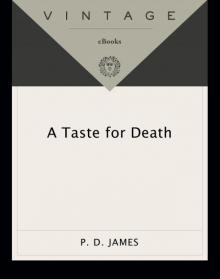 A Taste for Death
A Taste for Death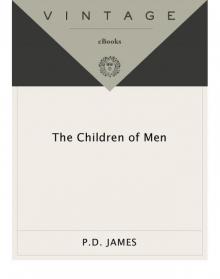 The Children of Men
The Children of Men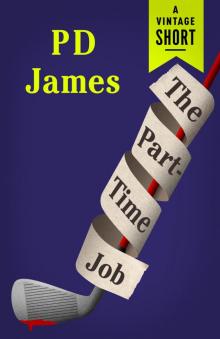 The Part-Time Job
The Part-Time Job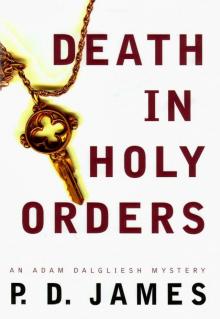 Death in Holy Orders
Death in Holy Orders The Victim
The Victim Shroud for a Nightingale
Shroud for a Nightingale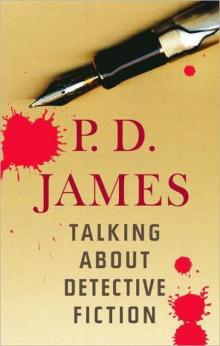 Talking about Detective Fiction
Talking about Detective Fiction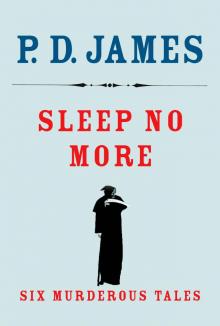 Sleep No More
Sleep No More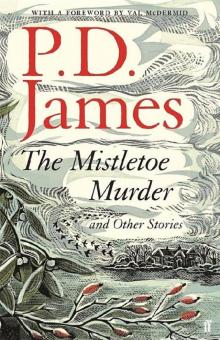 The Mistletoe Murder and Other Stories
The Mistletoe Murder and Other Stories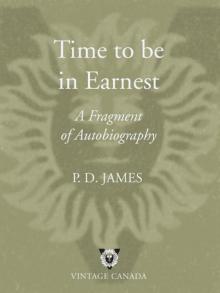 Time to Be in Earnest
Time to Be in Earnest Original Sin
Original Sin A Mind to Murder
A Mind to Murder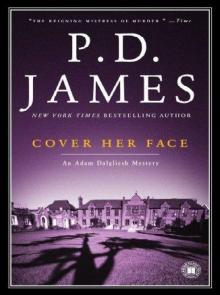 Cover Her Face
Cover Her Face Innocent Blood
Innocent Blood Devices and Desires
Devices and Desires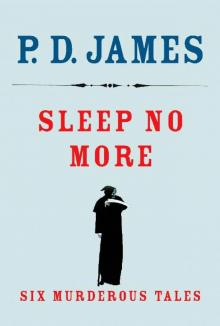 Sleep No More: Six Murderous Tales
Sleep No More: Six Murderous Tales Death Comes to Pemberley
Death Comes to Pemberley The Mistletoe Murder
The Mistletoe Murder Death of an Expert Witness
Death of an Expert Witness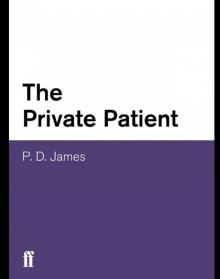 The Private Patient
The Private Patient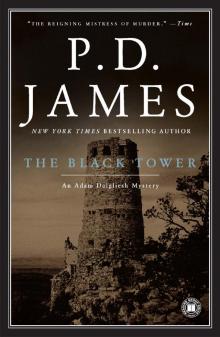 The Black Tower
The Black Tower Devices & Desires - Dalgleish 08
Devices & Desires - Dalgleish 08 Unnatural Causes
Unnatural Causes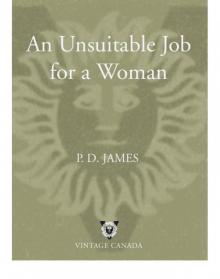 An Unsuitable Job for a Woman
An Unsuitable Job for a Woman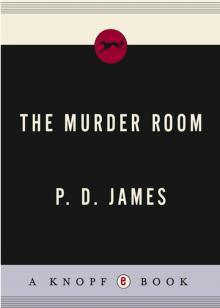 The Murder Room
The Murder Room A Certain Justice
A Certain Justice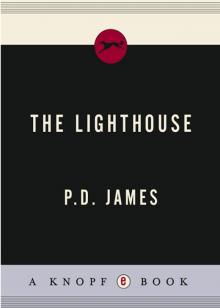 The Lighthouse
The Lighthouse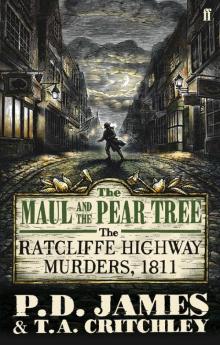 The Maul and the Pear Tree
The Maul and the Pear Tree